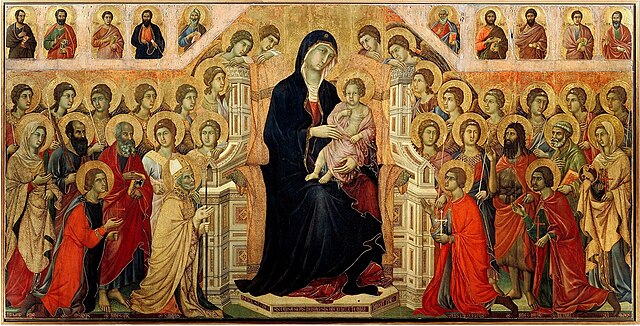Giovanni di Paolo di Grazia was an Italian painter, working primarily in Siena, becoming a prolific painter and illustrator of manuscripts, including Dante's texts. He was one of the most important painters of the 15th century Sienese School. His early works show the influence of earlier Sienese masters, but his later style was more individual, characterized by cold, harsh colours and elongated forms. His style also took on the influence of International Gothic artists such as Gentile da Fabriano. Many of his works have an unusual dreamlike atmosphere, such as the surrealistic Miracle of St. Nicholas of Tolentino painted about 1455 and now housed in the Philadelphia Museum of Art, while his last works, particularly Last Judgment, Heaven, and Hell from about 1465 and Assumption painted in 1475, both at Pinacoteca Nazionale (Siena), are grotesque treatments of their lofty subjects. Giovanni's reputation declined after his death but was revived in the 20th century.

Giovanni di Paolo, St Catherine of Siena
Raising of Lazarus by Giovanni di Paolo
Raising of Lazarus by Duccio
The Creation and the Expulsion from the Paradise (ca. 1438–44) Tempera & gold on wood (46.5 x 52 cm ) Metropolitan Museum of Art
The Sienese School of painting flourished in Siena, Italy, between the 13th and 15th centuries. Its most important artists include Duccio, whose work shows Byzantine influence, his pupil Simone Martini, the brothers Pietro and Ambrogio Lorenzetti and Domenico and Taddeo di Bartolo, Sassetta, and Matteo di Giovanni.
Simone Martini, Annunciation with St. Margaret and St. Ansanus, 1333
Pietro Lorenzetti, detail of the Deposition of Christ, Fresco in the Lower Basilica at Assisi
Maestà by Duccio (1308–11) Tempera on wood, 214 x 412 cm Museo dell'Opera del Duomo, Siena
Ugolino di Nerio, predella scene of The Last Supper








